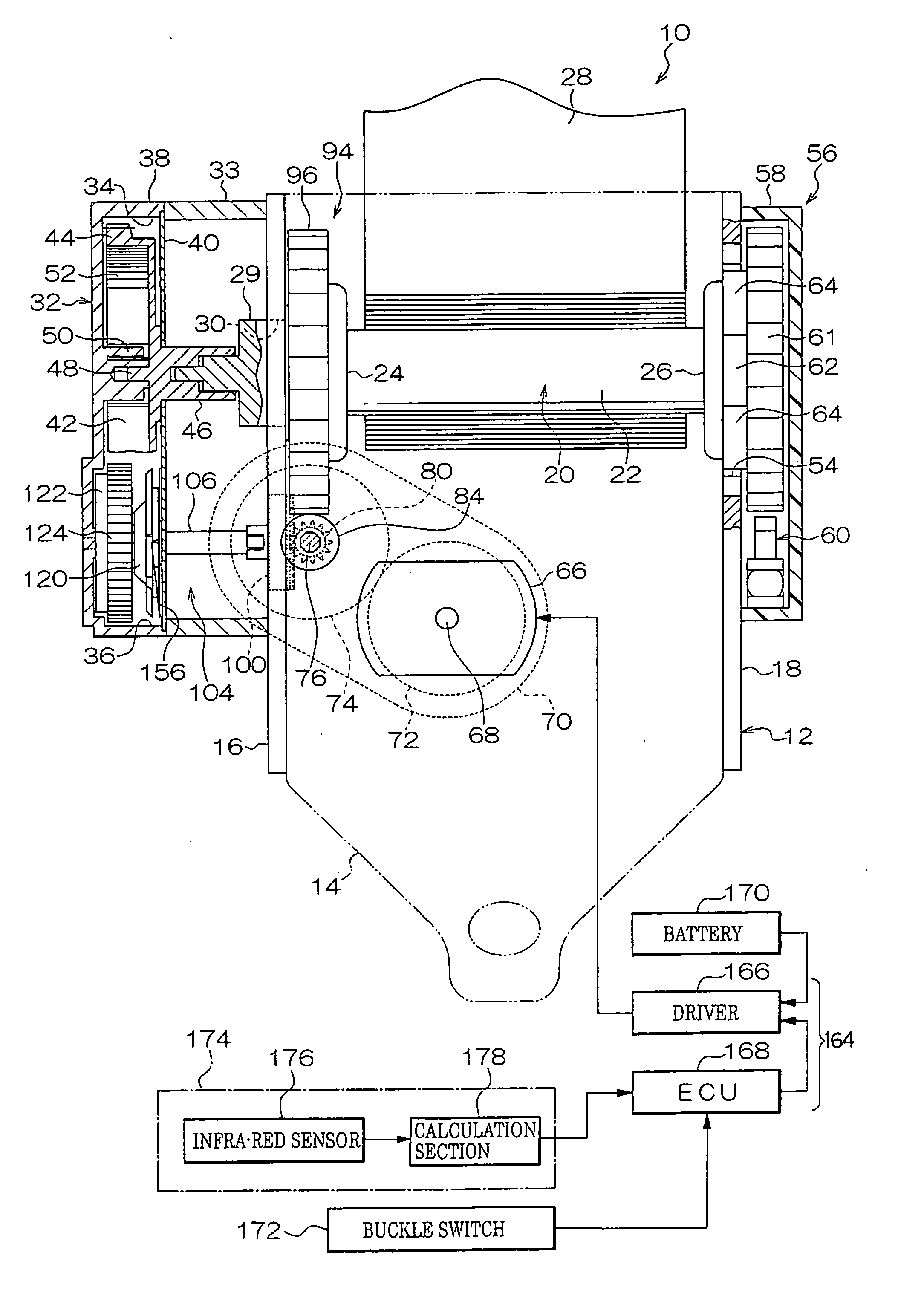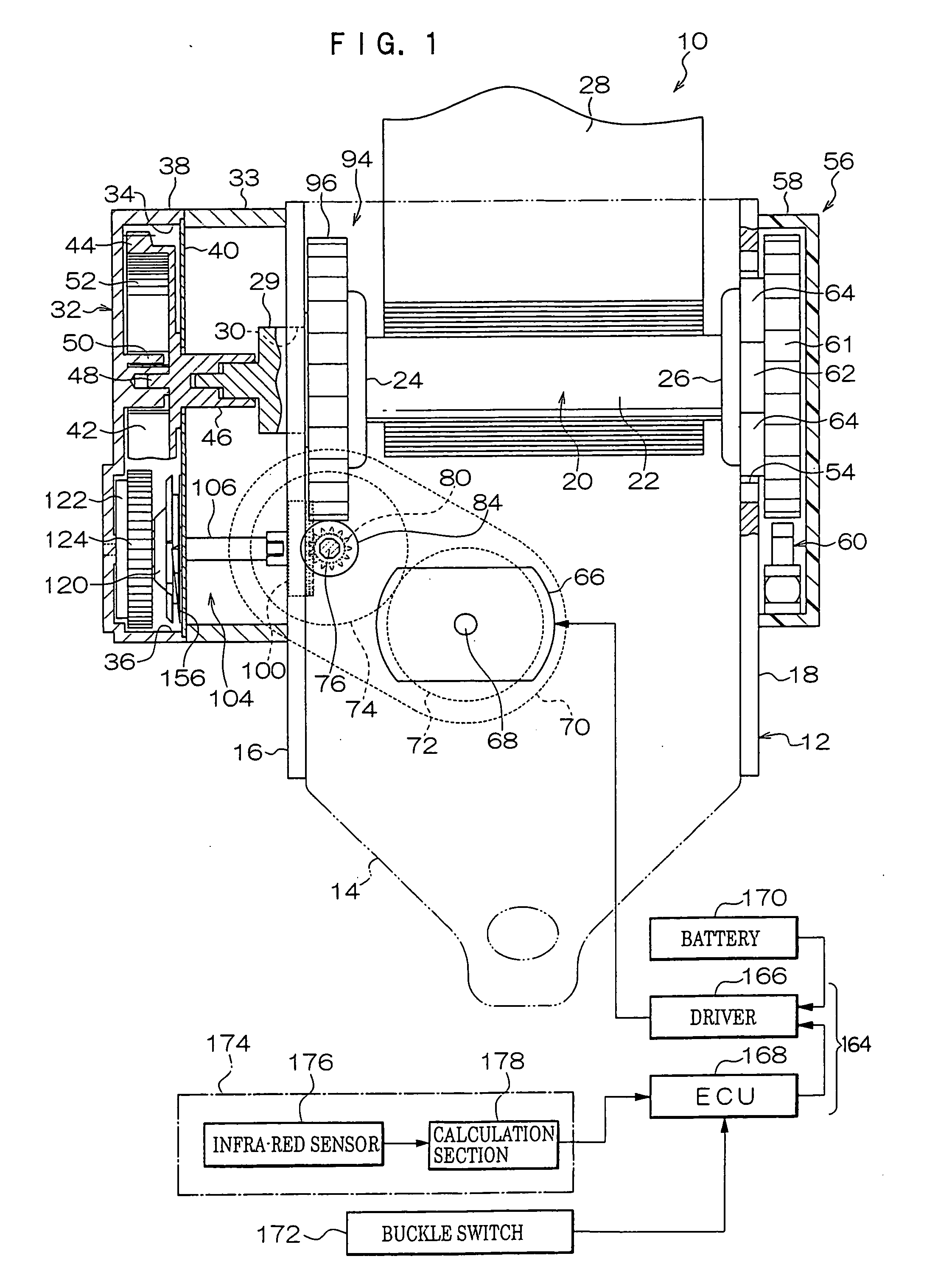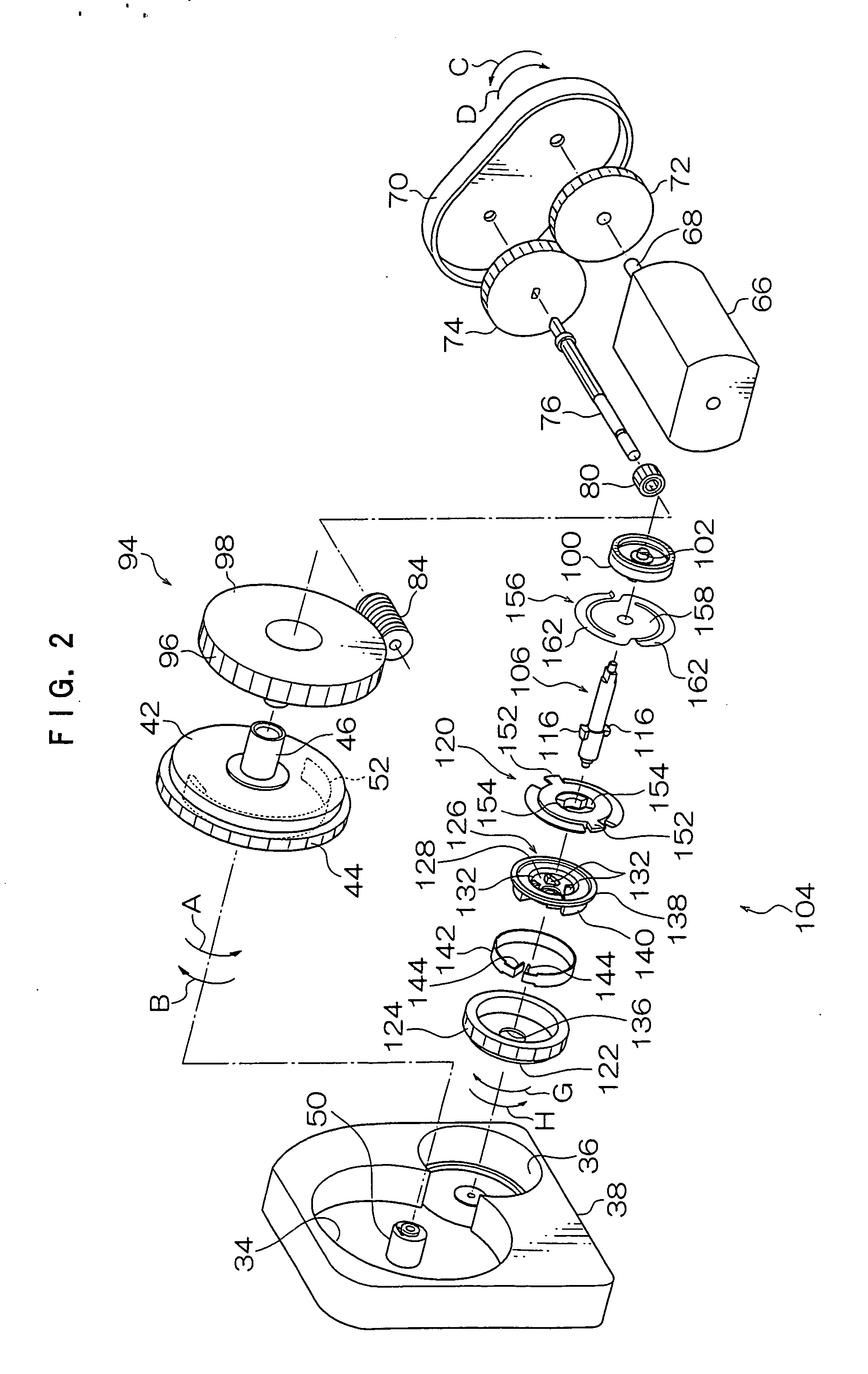Motorized retractor
a motorized and retractor technology, applied in the direction of belt retractors, vehicle safety belts, belt control systems, etc., can solve the problems of occupants to whom the webbing is applied to experience a sense of constriction, deterioration in appearance at times of non-use of webbing, etc., and achieve high torque
- Summary
- Abstract
- Description
- Claims
- Application Information
AI Technical Summary
Benefits of technology
Problems solved by technology
Method used
Image
Examples
first embodiment
[0095]FIG. 1 shows a schematic rear sectional view of overall structure of a motorized retractor 10 relating to a first embodiment of the present invention.
[0096] As shown in FIG. 1, the motorized retractor 10 is provided with a frame 12. The frame 12 is provided with a substantially plate-form rear plate 14. This rear plate 14 is fixed to a vehicle body by an unillustrated fastening mechanism such as bolts or the like. Thus, the motorized retractor 10 is fixed to the vehicle body. A pair of leg pieces 16 and 18 are provided extending from both ends in the width direction of the rear plate 14, in parallel with one another. A spool 20, which is produced by die-casting or the like, is rotatably disposed between the leg pieces 16 and 18.
[0097] The spool 20 is provided with a spool main body 22 and a pair of flange portions 24 and 26, at two end portions of the spool main body 22. The spool main body 22 has a substantially tubular form, and the two flange portions 24 and 26 are each f...
second embodiment
[0183] Next, a second embodiment of the present invention will be described. Note that structures and operations that are essentially the same as in the first embodiment are assigned the same reference numerals as in the first embodiment, and descriptions thereof are omitted.
[0184]FIG. 12 shows a schematic exploded perspective view of principal elements of a motorized retractor 200 relating to the second embodiment of the present invention.
[0185] The motorized retractor 200 has a structure that is basically similar to the motorized retractor 10 relating to the first embodiment, but differs in the following respects.
[0186] As shown in FIG. 12, the motorized retractor 200 is provided with a case 202. The case 202 has a structure basically the same as the case 32 of the motorized retractor 10 relating to the first embodiment, and is provided with a case main body 204 and the cover 40 (see FIG. 13). The case main body 204 is provided with the first accommodation portion 34 and a seco...
third embodiment
[0220] Next, a third embodiment of the present invention will be described. Note that structures and operations that are essentially the same as in the first and second embodiments are assigned the same reference numerals as in the first and second embodiments, and descriptions thereof are omitted.
[0221]FIG. 20 shows a schematic plan sectional view of principal elements of a reverse driving force transmission mechanism which is a structural member of a motorized retractor 300 relating to the third embodiment of the present invention.
[0222] This motorized retractor 300 has a structure that is basically similar to the motorized retractor 200 relating to the second embodiment but, as shown in FIG. 20, a second clutch 302, which structures the reverse driving force transmission mechanism of the motorized retractor 300, is partially different from the second clutch 212 which structures the reverse driving force transmission mechanism of the motorized retractor 200.
[0223] The second cl...
PUM
 Login to View More
Login to View More Abstract
Description
Claims
Application Information
 Login to View More
Login to View More - R&D
- Intellectual Property
- Life Sciences
- Materials
- Tech Scout
- Unparalleled Data Quality
- Higher Quality Content
- 60% Fewer Hallucinations
Browse by: Latest US Patents, China's latest patents, Technical Efficacy Thesaurus, Application Domain, Technology Topic, Popular Technical Reports.
© 2025 PatSnap. All rights reserved.Legal|Privacy policy|Modern Slavery Act Transparency Statement|Sitemap|About US| Contact US: help@patsnap.com



